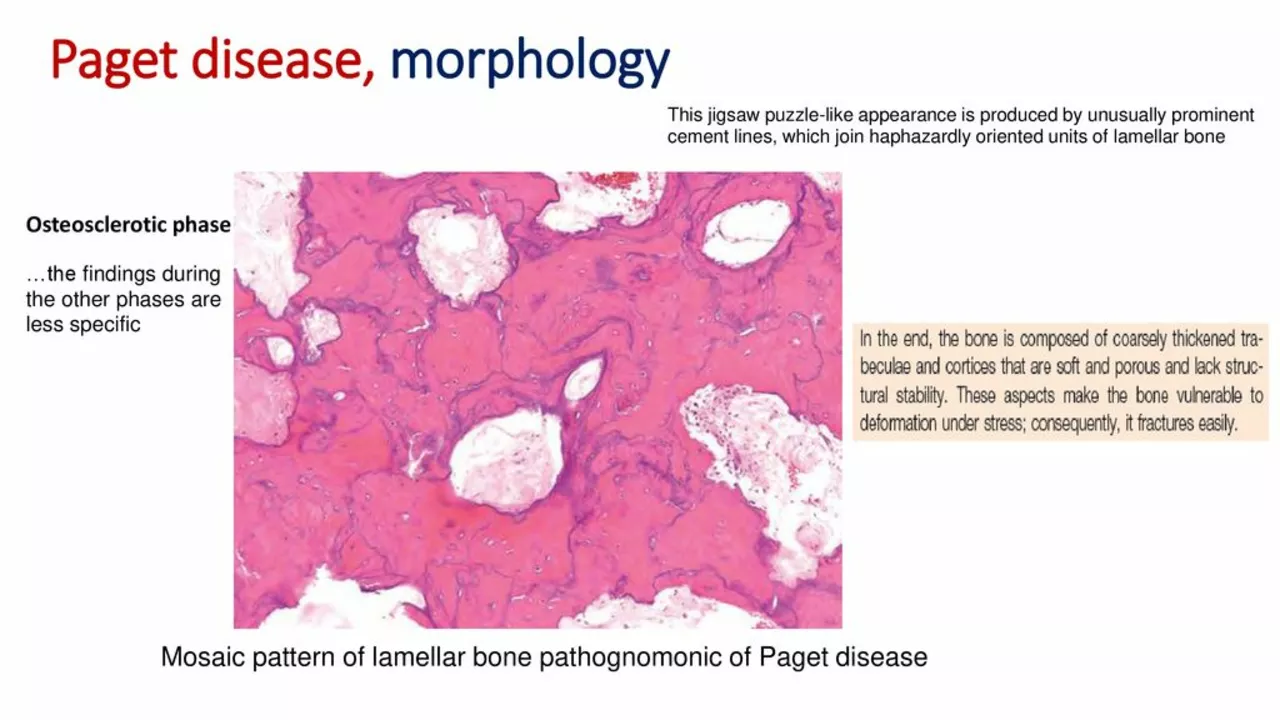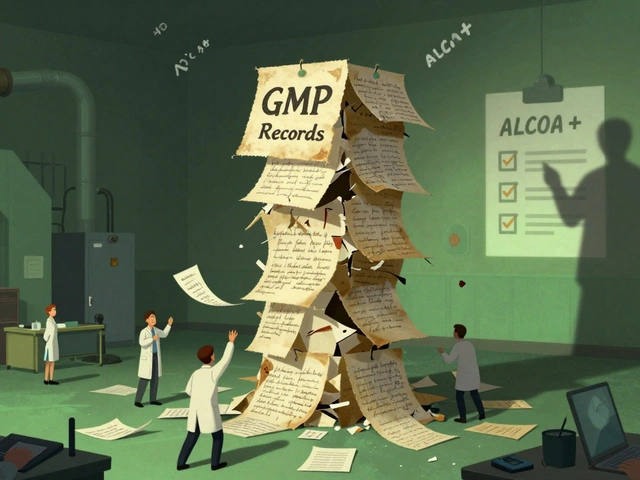Paget's Disease of Bone — what to know right now
Paget's disease is a bone disorder where normal bone breakdown and rebuilding get out of balance. That makes bones bigger, weaker, or oddly shaped. It most often shows up after age 50 and can be limited to one bone or affect several. Many people have mild or no symptoms at first, so knowing the signs helps you get treatment before complications show up.
How Paget's disease usually shows up
The most common symptom is persistent bone pain that doesn't feel like a muscle ache. Other signs include bone deformity (a bowed leg or enlarged skull), frequent fractures from minor bumps, and joint pain where the affected bone meets a joint. If the skull is involved, you might notice hearing loss. Some people only discover it after an X‑ray or a blood test for unrelated reasons.
Doctors often spot Paget's disease after one of three clues: an X‑ray that looks unusual, an elevated alkaline phosphatase (ALP) blood test, or a bone scan showing active areas. ALP measures bone formation activity and tends to be high when Paget's is active. Calcium and phosphate in the blood are usually normal, which helps separate Paget's from other bone problems.
Practical treatment steps you can expect
Treatment aims to relieve pain, reduce bone turnover, and prevent complications like fractures or nerve pressure. First-line drugs are bisphosphonates. A single IV dose of zoledronic acid often stops disease activity for years. Oral options like alendronate and risedronate work too but need strict dosing rules and can cause stomach upset.
If bisphosphonates aren't possible, calcitonin is an older option that can ease symptoms. Pain relief with acetaminophen or NSAIDs helps in the short term. Severe deformity, fractures, or nerve compression sometimes need surgery. For hearing loss, a hearing aid is usually more helpful than trying to treat the bone directly.
Follow-up usually means checking symptoms and repeating ALP after 3–6 months to confirm the treatment worked. If ALP stays high or symptoms return, further treatment or repeat imaging may be needed. Keeping vitamin D and calcium levels normal supports bone recovery during and after therapy.
There’s no guaranteed way to prevent Paget's, but early diagnosis matters. If you’re over 50 with unexplained bone pain, a new bone deformity, or persistent hearing changes, ask your doctor about an X‑ray and an ALP test. Family history can raise the chance of getting it, so mention relatives with similar bone issues.
Simple steps you can take now: keep active with weight‑bearing exercise, avoid smoking, maintain vitamin D and calcium intake, and get medical follow-up if pain or shape changes appear. Paget's disease can be managed well when caught early—treatment reduces pain and lowers the risk of major problems.
The Different Stages of Paget's Disease and How They Affect Your Health
In my recent research on Paget's Disease, I discovered that this bone disorder progresses through different stages, each with its unique impact on our health. The early stages, known as the "lytic phase," involve bone breakdown which can lead to pain, deformity, and even fractures. As the disease progresses to the "mixed phase," new bone formation occurs, but it's disorganized, leading to further complications. In the final "sclerotic phase," the bones become denser but weaker, increasing the risk of fractures and other health issues. It's crucial to understand these stages and seek treatment accordingly to maintain our overall well-being.






